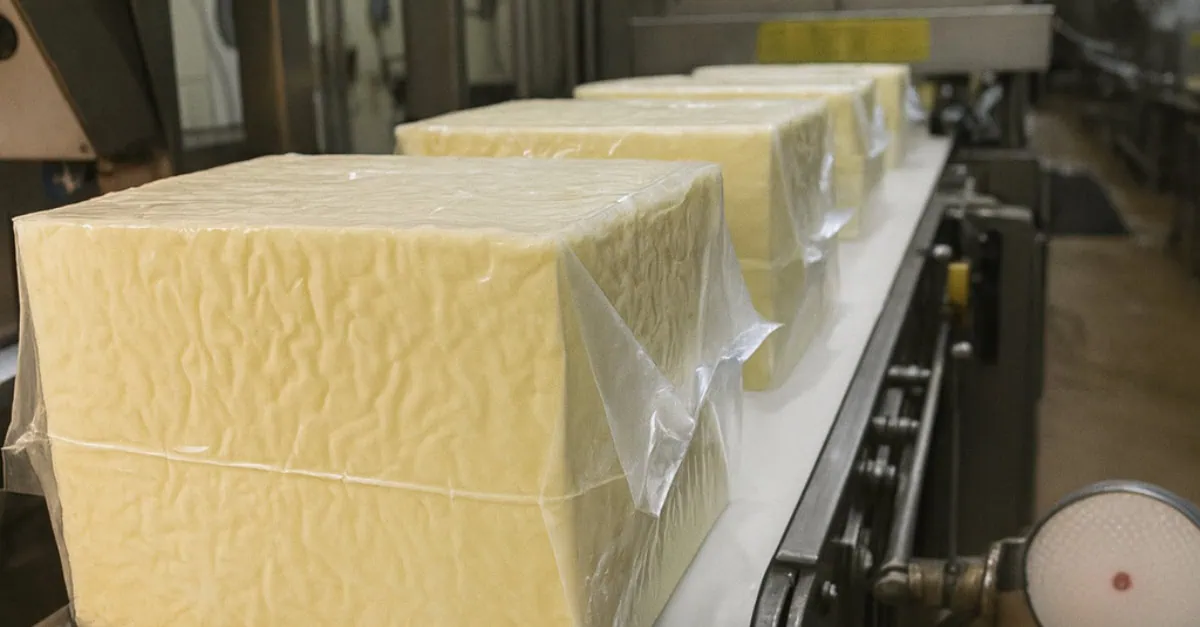July 16, 2025 – Market Analysis
Global dairy markets are experiencing widespread weakness across multiple product categories, with market participants struggling to predict the trajectory and depth of the current downturn. The uncertainty surrounding market direction is creating divergent strategies among industry players, as fundamental supply-demand imbalances challenge traditional pricing relationships and market expectations.
Butter markets face sentiment shift amid changing fundamentals
European butter markets are experiencing a notable shift in sentiment, with prices moving toward the lower end of recent trading ranges as underlying fundamentals show signs of structural change. The market’s weakness is becoming more apparent as production, import, and export data reveal shifting supply-demand balances compared to previous years.
Market participants report that buyer interest typically emerges when prices approach certain key levels, suggesting that demand remains price-sensitive rather than completely absent. However, the sustainability of this support is being questioned as seasonal factors and production trends evolve.
Recent cream price movements have added complexity to butter market dynamics. After reaching elevated levels during warmer weather periods, cream prices have moderated as temperatures normalized, affecting the traditional cost-support relationship that often underpins butter pricing.
Regional variations continue to characterize global butter markets, with different areas experiencing distinct supply-demand conditions. While some regions maintain better price support through strong export performance, others face headwinds from currency disadvantages and changing trade flows.
Milk powder sectors struggle with demand weakness
Skim milk powder markets are demonstrating persistent weakness, particularly in European regions where export challenges are compounding domestic oversupply issues. Currency disadvantages are significantly impacting export competitiveness, creating particular challenges for regions heavily dependent on international sales.
Recent production data indicates continued expansion in powder output, adding to already abundant supply conditions. The combination of increased production and limited demand absorption is creating pressure across multiple market segments.
However, some regional variations are emerging, with certain origins showing signs of improved demand from Asian markets. Recent auction results from major exporting regions have shown mixed signals, with some contract periods demonstrating price strength while others remain under pressure.
US milk powder markets are benefiting from structural production changes and currency advantages that are supporting export competitiveness. Reduced production capacity in certain categories is helping to balance supply-demand relationships in some market segments.
Whole milk powder defies constituent pricing logic
Whole milk powder markets are demonstrating unusual resilience compared to their constituent components, creating pricing anomalies that challenge traditional valuation models. Current market prices appear disconnected from the combined values of butter and skim milk powder, suggesting that independent demand factors are supporting the market.
The disconnect is particularly notable given the weakness in both butter and powder markets, which would traditionally translate into proportional pressure on whole milk powder pricing. This suggests that specific demand characteristics or supply constraints are providing market support.
Recent Global Dairy Trade auction results have shown mixed performance, with some contract periods demonstrating price increases despite broader market weakness. The geographic concentration of buying interest appears to be influencing pricing patterns, with certain regions showing more active procurement strategies.
European whole milk powder production is showing varied patterns across different countries, with some increasing output while others reduce capacity in response to market conditions. This mixed production response is contributing to supply-side uncertainty.
Currency and seasonal factors add complexity
Exchange rate movements continue to play a crucial role in determining competitive positioning between major dairy producing regions. The persistence of unfavorable currency relationships for some exporters is creating structural challenges that extend beyond normal market cycles.
Seasonal temperature variations have created short-term supply disruptions in some regions, affecting both production costs and processing economics. These weather-related impacts are adding volatility to already uncertain market conditions.
The interaction between currency movements, seasonal factors, and underlying supply-demand fundamentals is creating a complex environment where traditional market relationships are being challenged.
Production optimization strategies emerge
Dairy processors are increasingly optimizing their product mix in response to varying profitability across different categories. The shift toward higher-value products is affecting availability across multiple market segments and influencing traditional supply relationships.
This production optimization is particularly evident in European markets, where processors are reassessing their manufacturing strategies based on current market returns. The flexibility to adjust product mix is becoming a crucial competitive advantage in the current environment.
Market participants note that these production adjustments may create supply constraints in certain categories later in the year, potentially affecting market dynamics as seasonal demand patterns evolve.
Forward market positioning intensifies
Despite current weakness, market participants are increasingly focused on forward positioning as uncertainty about future market direction creates risk management challenges. The unpredictability that has characterized dairy markets in recent years is encouraging more strategic procurement approaches.
Industry players are expressing varied views on whether current weakness represents a temporary adjustment or the beginning of a more sustained downturn. This uncertainty is creating opportunities for those willing to take contrarian positions while challenging traditional market timing strategies.
The completion of near-term procurement activities is shifting focus toward longer-term coverage requirements, with market participants attempting to balance current weak sentiment against potential future supply constraints.
Read full week 29 Butter, SMP, WMP market analysis on the Vesper platform here: https://app.vespertool.com/market-analysis/2106





